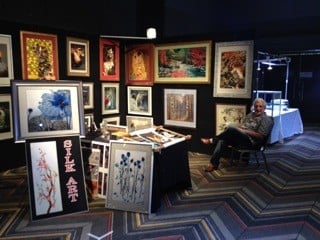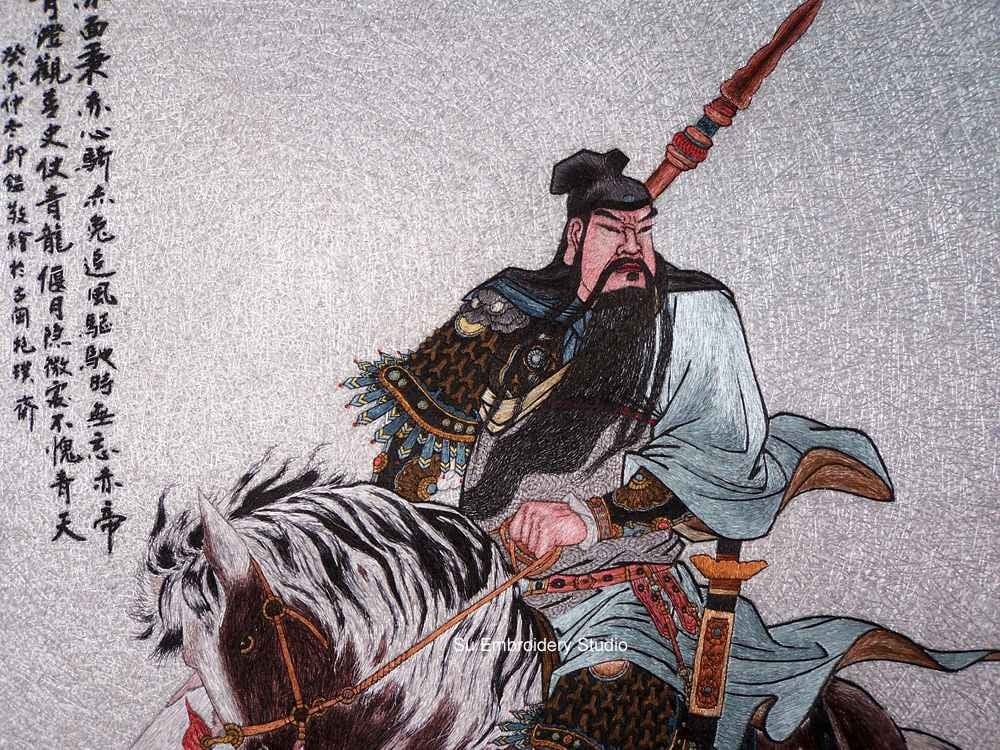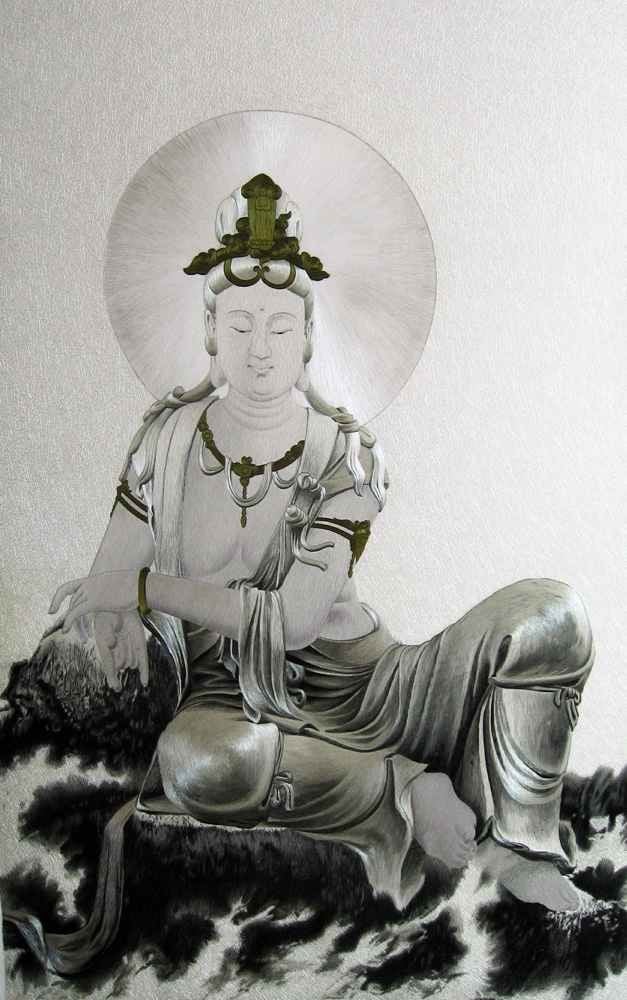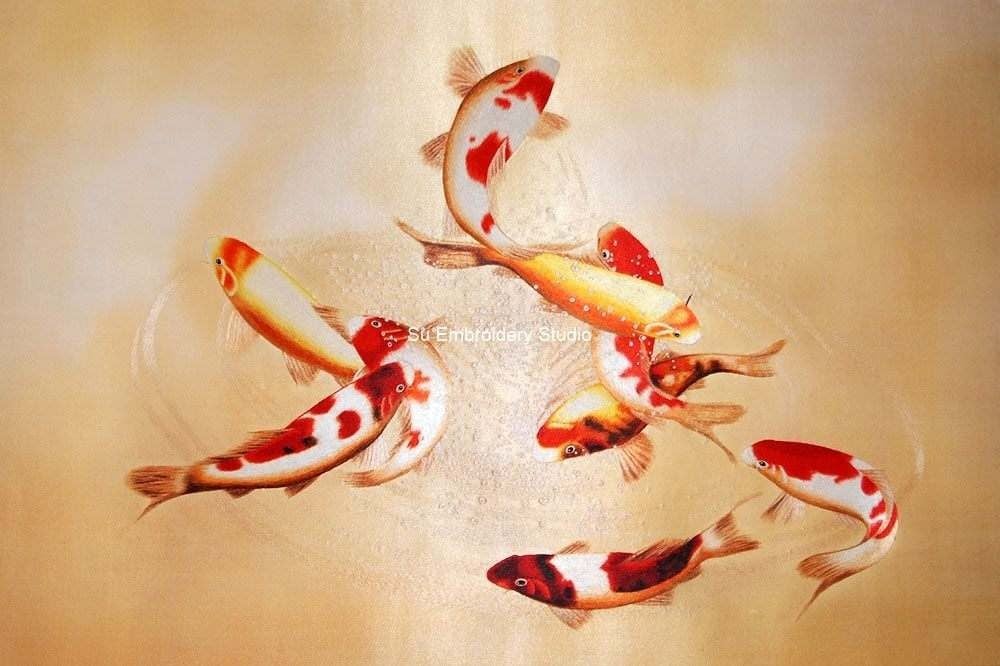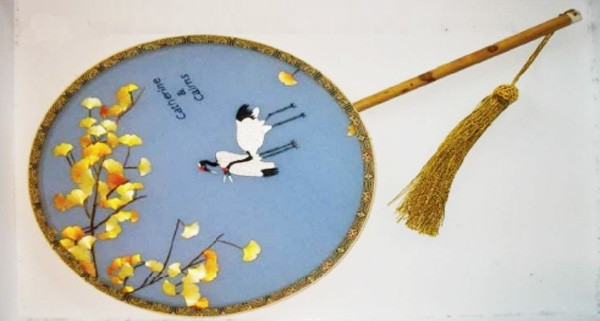
A Tribute to Our Friends and Supporters (IV)
Before we dive into the world of Suzhou embroidery, we wish to pay tribute to two extraordinary individuals, Dr. Catherine and Cairns. Their unwavering support and genuine kindness have left an indelible mark on Su Embroidery Studio, and we are profoundly grateful for their friendship.
In the summer of 2015, during our exhibition at the Edinburgh Art Festival, fate introduced us to Dr. Catherine and Cairns, a kind couple from Stirling. Their enthusiasm for Suzhou embroidery was both heartwarming and infectious. They acquired several Masterpiece silk embroideries at the Dundas Street Gallery where we held our embroidery art exhibition.
In the years that followed, Dr. Catherine and Cairns continued to support us from afar. They placed orders for silk embroideries, demonstrating their dedication to preserving the ancient art of Suzhou embroidery. But their generosity extended beyond these acts of kindness.
In the spring of 2019, they penned an article for The Fan Circle International, introducing Suzhou embroidery and Su Embroidery Studio to a broader audience. Their selfless efforts to spread awareness about our silk embroideryhave not gone unnoticed, and we are deeply touched by their commitment to our cause.
As we share their insightful article with you, we want to express our heartfelt gratitude to Dr. Catherine and Cairns. Your friendship and advocacy for Suzhou embroidery have enriched our lives, and we are profoundly thankful for your continued support.
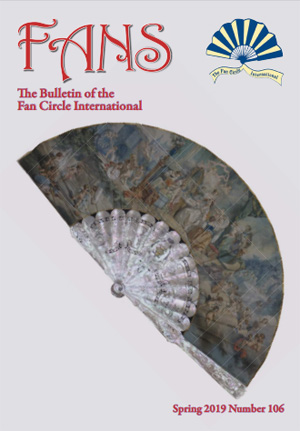
Suzhou Double-sided Embroidery Fans
by Cairns Mason
This short article links historic Chinese flat hand fans to a superb modern manifestation involving another Chinese skill, namely Suzhou double-sided embroidery. Double sided embroidery, also known as two-sided embroidery, is a technique in which stitching takes place on both sides of a single transparent silk fabric. The design shows on both sides (front and reverse). The embroidery artists skillfully hide all the loose threads and knots. Such a piece is normally mounted on a wooden frame as a screen, but of course such a frame could be mobile and serve as a fan.
The embroidery artist always works on the same side of the background, even though the picture on the other side may be entirely different. I call these double-faced embroideries. In this case the embroiderer (typically female) must keep both images in her mind. This requires intense concentration. When embroidering areas that are the same colour on both sides, the needlewoman uses one threaded needle to do both sides at once. When embroidering areas that are differently coloured on each side, she uses two needles threaded with different colours. In all double-sided embroideries, the embroiderer holds down satin stitches on the upper side with couching stitches from the underside. The couching stitches are not visible on the upper side because the thread is so fi ne. On the underside, the thread makes satin stitches as it travels from couching stitch to couching stitch. The result is parallel satin stitches on top and bottom, in the case of double-faced these being in two different colours. It is my understanding that of the various historic centres of Chinese embroidery, it was only at Suzhou that such doublesided and double-faced embroidery was mastered. For now, it is still practised there.
Generally works in double-sided embroidery can be divided into two groups based on the size of the work. Large size double sided embroideries are used both for dividing a room and interior decoration. The actually worked silk cloth is usually set between two panes of glass, then framed, this frame then mounted within a decorative fl oor stand. Those of smaller dimensions (say, up to around 30cm or 12in square) can be used as desk screens or standing ornament on surfaces. The smaller
embroideries are typically of three shapes: circle, rectangle and the traditional pear-shape of the fixed Chinese fan. The round and rectangular embroideries are typically set in ornamental stands. The higher quality works are usually protected between glass, framed and set in their stand to be rotatable, so both sides of the embroidery work can be seen. Those of fan form can come with a matching, supportive stand. The embroidered face of the fan might be enclosed within two panes of glass. Various qualities and shapes of fan are still made.
I would encourage FCI members who are unaware of such fans to think seriously about adding one to their collection.
There is more to my suggestion than for members to enjoy an extension to the genre. There are around the world many traditional skills at risk of dying out. In China, this is one traditional craft which is in serious danger of becoming extinct. The arduous training from a young age to achieve the dexterity necessary to create such embroideries, and the effort involved in making them, does not appeal to young people as a way to earn their living. In our technology-driven age there appear much more attractive options for much less eff ort. There is every likelihood that the craft will die when the current embroiderers no longer have the suppleness in their hands nor the eyesight to make these pieces. We have already seen this much closer to home with the demise of traditional Bruges lace making.
If there was an increased awareness of the skill and beauty in these Suzhou embroideries, this could create demand for them. This would give the few entrepreneurs still trying to operate embroidery workshops more support in bringing in young workers to undertake apprenticeships.
That at least is the firm belief of one such young entrepreneur, Mao Chunhua, of Su Embroidery Studio. My wife and I were fortunate to meet him when he was selling in Edinburgh in 2015. Mr Mao had made the business decision to hire a gallery during the Edinburgh International Festival and to bring a collection of his single-sided masterpiece embroideries to display and sell. (He had not brought any of his double-sided works.)
After ourselves buying certain items as exquisite embroideries, we got into discussions with Mr Mao. This made us empathise with this young businessman’s goal of preserving this craft as far as possible. We have ourselves since bought further single and double embroideries from him by mail-order, as his website shows extensive potential choice. We have found him reliable in quality and delivery. Su Embroidery Studio’s history and stock can be found and enjoyed at http://www.suembroidery.com.
These purchases had included one double sided fan on a fitted stand with the embroidery glass enclosed.
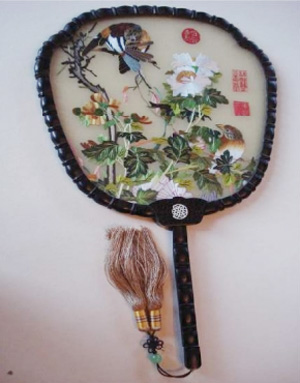
Recently becoming interested in fans in general, we bought a second. Then totally to our surprise, and without his knowing of our new interest in fans, Mr Mao sent us, as a Christmas gift from Su Embroideries, another fan - simpler, circular, but also two-sided embroidery.

It came with the explanation: ‘The gingko tree which has fan-shaped leaves and turns yellow beautifully in autumn is considered as longevity tree in China as it is found in fossils dating back 270 million years. In Chinese culture, the red-crowned crane stands for longevity’. This fan thus embodies the history of Suzhou double-sided embroidery, and its hope for the future.
by Su Embroidery Studio (SES), Suzhou China
SES is dedicated to Chinese Silk Embroidery Art and High-End Custom Embroidery
Find SES's embroidery work at Chinese Silk Embroidery for Sale.








